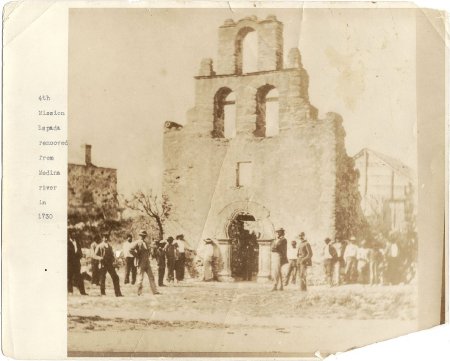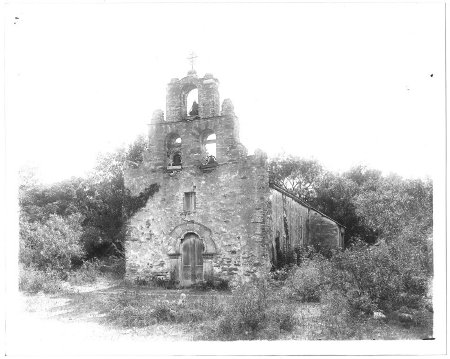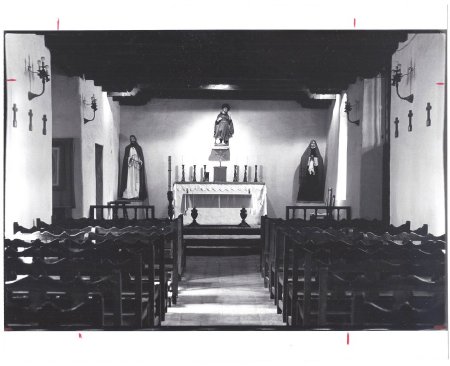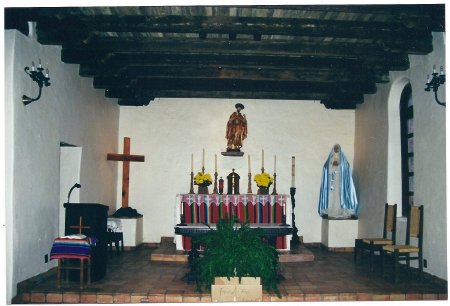History:
After secularization, the unused chapel at Mission Espada fell into ruins. The side walls and the roof collapsed, leaving only the front and back walls standing. In 1858, a new priest named Father Francis Bouchu arrived at Mission Espada. He remained there as resident priest until his death in 1907. Father Bouchu had the care of both Mission San Juan and Espada during this time. With his own hands, he rebuilt the side walls on the old foundations, then plastered and whitewashed them. He put a tin roof on the chapel, and placed new doors at the entrances. Inside the chapel, he laid a wooden floor, built a choir loft, set up a sanctuary railing and installed simple, but sturdy pews with kneelers.
Some of the original statues of St. Francis, Jesus of Nazareth, and Our Lady of Sorrows remained. These, he re-gilded and put on the altar in the sanctuary, where they can be seen today. Father Bouchu also wrote a catechism to teach the children the Catholic faith, and printed several thousand copies on an old–fashioned printing press.
Some of the original statues of St. Francis, Jesus of Nazareth, and Our Lady of Sorrows remained. These, he re-gilded and put on the altar in the sanctuary, where they can be seen today. Father Bouchu also wrote a catechism to teach the children the Catholic faith, and printed several thousand copies on an old–fashioned printing press.
About this Image:
1) A group of men poses outside the ruins of the Espada chapel. Only the front (east) wall remains standing. The north wall of Father Bouchu's house is just visible at left.
2) A view of the front (east) and right (north) facades of the chapel at Mission Espada.
3) Photo taken from the center aisle of Espada's chapel, facing the altar. The statues from left to right are: Jesus of Nazareth, St. Francis, and Our Lady of Sorrows. St. Francis' foot rests on a skull, while his left hand is raised to hold a crucifix (missing at the time this photo was taken).
4) In this color photo, St. Francis's cloak and tunic shine with gold gilding. Photo taken by Gordon Shults.
2) A view of the front (east) and right (north) facades of the chapel at Mission Espada.
3) Photo taken from the center aisle of Espada's chapel, facing the altar. The statues from left to right are: Jesus of Nazareth, St. Francis, and Our Lady of Sorrows. St. Francis' foot rests on a skull, while his left hand is raised to hold a crucifix (missing at the time this photo was taken).
4) In this color photo, St. Francis's cloak and tunic shine with gold gilding. Photo taken by Gordon Shults.
To Learn More:
View Catalog Record (Main Image)
View Catalog Record (Image 2)
View Catalog Record (Image 3)
View Catalog Record (Image 4)
View Catalog Record (Image 2)
View Catalog Record (Image 3)
View Catalog Record (Image 4)
Credit:
Courtesy of the San Antonio Conservation Society Foundation.




